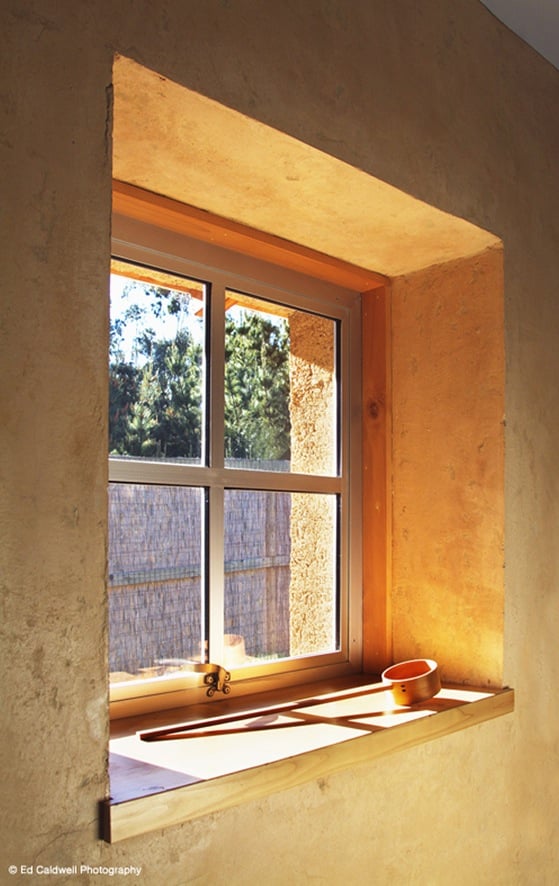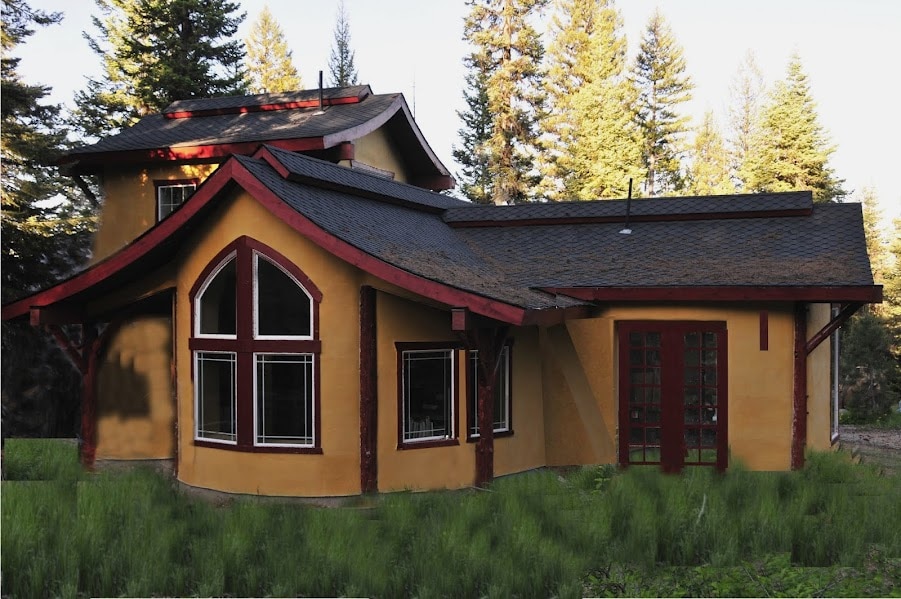 |
| Image from solarhaven.org |
Whoever said that building homes is so expensive these days, never tried building with straw! Straw bale construction is a building method that is gaining popularity due to the fact that it is less expensive than traditional building and is also many times more eco-friendly. I'm hoping to start building myself an "off-the-grid" straw bale house next spring (fingers crossed), and figure I can probably get it done for less than what a lot of people's patios. Granted it'll be small, just a little 700 or 800 sq. ft. fairytale house if I can swing it with zoning, but still, how else could someone build a new house for so little?
Straw bale home construction is exactly what it sounds like, you actually build a house out of straw bales (visions of the big bad wolf and the three little pigs are probably starting to come to mind here).
It's usually more common down south in places like Arizona and New Mexico where the weather is dry, but that doesn't mean that it can't be done in other areas too. My neighbor at the farm market recently showed me a picture he took of a straw bale house in Trumansburg, NY (about an hour or so from where I live).
 |
| Image from strawbale.com |
There are two ways of building a straw bale house. The first being known as a load-bearing structure in which you build the house using only straw bales. The second method (and the one that's probably easier to get passed by a zoning board) consists of building a post framework and filling in between them with straw bales. In both methods, the straw bails themselves are the interior and exterior walls combined, as well being the insulation also. This saves times and money because there is no need to build an outer wall, fill with insulation, and then build in an inner wall. Straw bale walls are all three in one. The thick walls also make heating the house easy and provide nice, deep window seats.
Once built, the walls are sealed inside and out with coats of lime plaster (which can then be painted any color just like a traditional wall) giving the building a sort of classic stucco look. The plaster is "breathable" allowing any moisture already in the bails to seep out, while preventing any new moisture from entering. Unlike hay, straw bales will not spontaneously mold on their own, so as long as they are kept dry by a seal of plaster, the walls will stay in great condition. As straw bale homes are built of one solid wall sealed with plaster, it also makes it more difficult for unwanted critters, such as mice, to make homes within them.
It's a misconception that a straw bale home is a fire hazard. While loose straw burns very easily, the tightly packed bales in a straw bale house have a much harder time getting air to feed the flames. Many people happily use wood stoves and fireplaces in their straw bale homes without incident (straw bale homes being very popular with people desiring to live off-the-grid). In fact straw bales homes were some of the few homes that survived the California wildfires in the 1990's.
 |
| Image from strawbale.com |
Despite the fact that straw bale homes are so eco-friendly and practical, there is still a hesitancy among some people (and zoning boards) to accept them. For some reason the idea of a home made of a "natural' material frightens people away. The more processed a material is, the more people seem to accept it as a building a material. The truth is, straw bale homes are just as sturdy as man-made building materials (and have been used in Europe for centuries), and the homes last just as long as homes built with modern building materials. So no amount of huffin' and puffin' by the big bad wolf (or blutbad for the Grimmsters) is gonna to blow this house down!
For more straw bale house info visit:
Strawbale.com
Solarhaven.com
Harvesthomes.ca




No comments:
Post a Comment